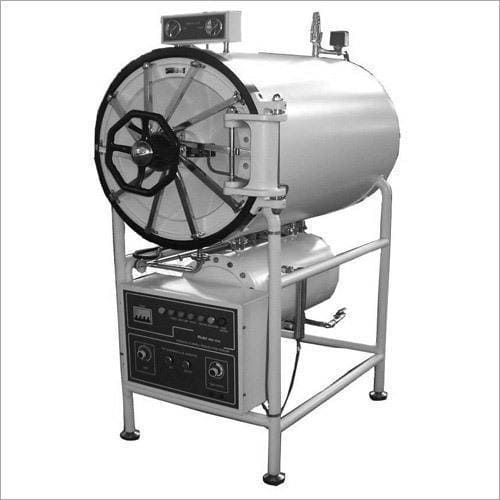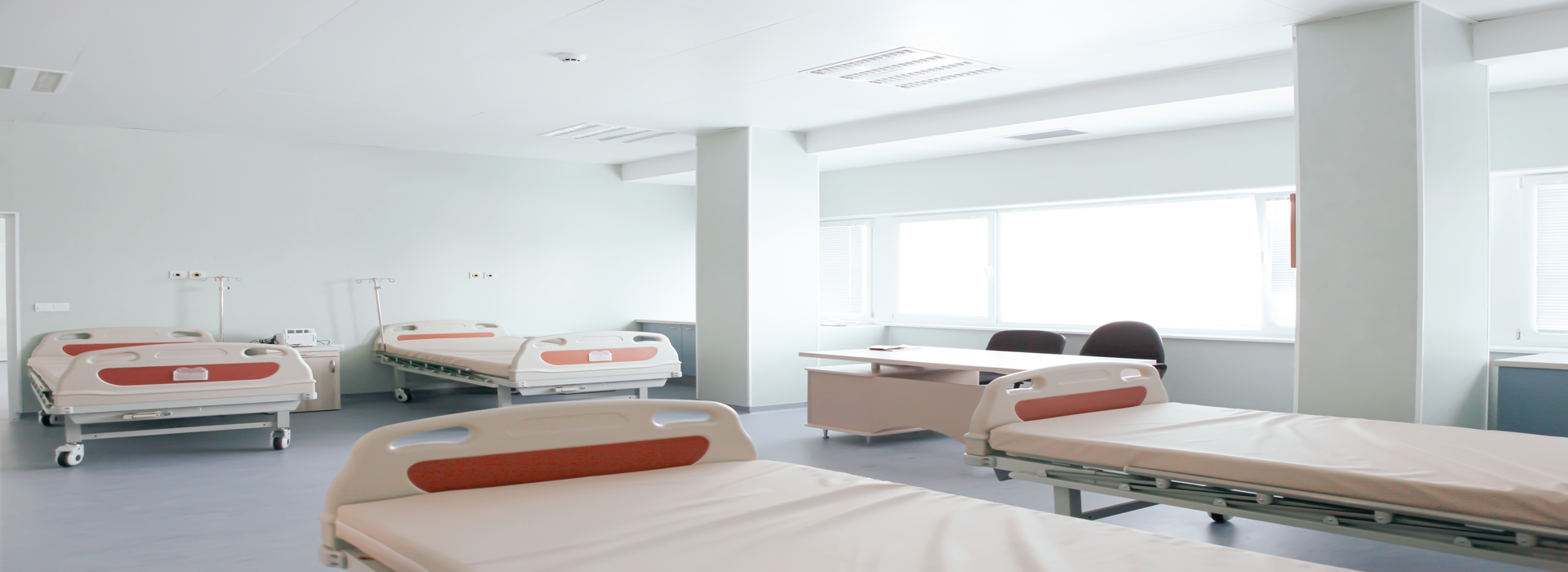
features
Ideal for healthcare and pharmaceutical industries, where huge volumes of sterilisation required.
Designed for academic institutions, biotech companies, pharmaceutical companies, hospitals, research centres, and the food and beverage industries.
Particularly suited for sterilising hospital dressings and surgical tools, rubber and plastic goods, glassware and cutlery, and other items that require thorough sterilisation.
Working Principle is Saturated steam at high temperatures has a rapid and thorough bacterial activity. All models work on the idea of downward air displacement, which is the most cost-effective form of sterilising.
- Product Characteristics
- How it works
- Equipment Components
- Available Sizes
- How to make use of it
- Use of a vacuum system to remove air from chamber to ensure no air pockets obstructing steam penetration and sterilising process.
- Standard 121°C & 134°C cycles that are pre-programmed PLC / Microprocessor sterilise a variety of hospital equipment such as gloves, linen, gauze, cotton, tools, glassware, and so on.
- An electrical steam generator for all models with a chamber volume of 1000 litres or less
- Internal air-pressure stabilisation from vacuum using a 0.01-micron clean air-filter.
- Safety is ensured as when the chamber is under pressure, the door automatically locks. To ensure sterile chain integrity, both doors on double door models will not open at the same time.
- Safety valves for the jacket and chamber are included.
- The chamber is made of SS 304/S316 grade steel, encircled and strengthened by a thick steel jacket.
- All machines are available with traditional hinged doors or with Modern Automatic sliding doors.
- Double-wall design ensures speedy and homogenous pre heating in chamber.
- Flush-mounted panel can be installed on the sterile side to ensure separation from the unmonitored operating environment (on request).
- The autoclave works on the principle of moist heat sterilization where steam under pressure is used to sterilize the material present inside the chamber.
- The high pressure increases the boiling point of water and thus helps achieve a higher temperature for sterilization.
- Water usually boils at 100°C under normal atmospheric pressure (760 mm of Hg); however, the boiling point of water increases if the pressure is to be increased.
- Similarly, the high pressure also facilitates the rapid penetration of heat into deeper parts of the material, and moisture present in the steam causes the coagulation of proteins causing an irreversible loss of function and activity of microbes.
- This principle is employed in an autoclave where the water boils at 121°C at the pressure of 15 psi or 775 mm of Hg.
- When this steam comes in contact with the surface, it kills the microbes by giving off latent heat.
- The condensed liquid ensures the moist killing of the microbes.
- Once the sterilization phase is completed (which depends on the level of contamination of material inside), the pressure is released from the inside of the chamber through the whistle.
- The pressure inside the chamber is then restored back to the ambient pressure while the components inside remain hot for some time.
- Pressure Chamber
- Double-wall design for homogenous and speedy pre heating in chamber.
- Triple walled, has a steam jacket, and is installed on a tubular stainless-steel frame with ground levelling bolted flanges. To reduce heat loss, the outer jacket is lined with mineral wool. Hydraulically, these sterilisers have been tested to withstand 2.5 times the working pressure.
- Steam generator
- Built of heavy gauge stainless steel sheet and is fixed in front of the boiler on a heavy ring with folding thick stainless-steel plate.
- It is equipped with a heating element and a low water level cut-off system to prevent the former from burning out.
- Multiport Valve
- mounted on the front top, the entire sterilisation cycle may be controlled from a single location. On gauges installed on the multiport valve, the jacket and chamber pressures are easily legible.
- Three levels of safety.
- At the boiler level, a PIEZOSTAT limits the pressure to the needed set valve and, in the event of its failure; a spring-loaded safety valve releases the steam to keep pressure within the safety limits.
- A spring-loaded safety valve and a dead weight release valve are installed at the chamber level to release steam if the pressure exceeds the safety limit. All of these safety features work independently of one another in the event of a failure.
- The discharge pipe is protected against choking by a plug screen. The plug may be readily removed for cleaning on a daily basis. The air is circulated throughout the chamber by a power ejector for drying sterilised lines. A corrosion-resistant metallic wool filter filters the circulating air. A steam trap is installed in the chamber discharge line to automatically remove the condensate.
- PID Controller
- operates fully automatically to display the chamber temperature.
- Automatic vacuum breaker
- To break the vacuum created by steam condensation, an
CYLINDRICAL HORIZONTAL AUTOCLAVES
| Sr. No | Chamber Diameter | Chamber Length | Volume (Approx) |
|---|---|---|---|
| 1 | 16″/400 mm | 24″/600 mm | 78 Ltr |
| 2 | 20″/500 mm | 36″/900 mm | 183 Ltr |
| 3 | 20″/500 mm | 48″/1200 mm | 245 Ltr |
| 4 | 24″/ 600 mm | 48″/1200 mm | 351 Ltr |
RECTANGULAR HORIZONTAL AUTOCLAVES
| Sr. No | Chamber Dimensions | Volume (Approx) Cu. Ft/ Ltr | ||
|---|---|---|---|---|
W (mm) | H (mm) | L (mm) | ||
| 1 | 450 | 450 | 900 | 6.75/190 |
| 2 | 600 | 600 | 1200 | 16/450 |
| 3 | 600 | 600 | 1500 | 20/560 |
| 4 | 900 | 900 | 1500 | 45/1260 |
Autoclaves are important devices to ensure the sterilization of materials containing water as they cannot be sterilized by dry heat sterilization. Besides, autoclaves are used for various other purposes.
- They are used to decontaminate specific biological waste and sterilize media, instruments, and labware.
- Regulated medical waste that might contain bacteria, viruses, and other biological materials is recommended to be inactivated by autoclaving before disposal.
- In medical labs, autoclaves are used to sterilize medical equipment, glassware, surgical equipment, and medical wastes.
- Similarly, autoclaves are used for the sterilization of culture media, autoclavable containers, plastic tubes, and pipette tips.
If you’re looking to purchase an autoclave to fulfill your application, please send us your requirements, application data, and desired autoclave accessories. Our technical representative will call you to explore your needs and generate a cost estimate.

